
Published:
Readtime: 10 min
Every product is carefully selected by our editors and experts. If you buy from a link, we may earn a commission. Learn more. For more information on how we test products, click here.
When you paint a picture of the ‘City of Tomorrow’ in your mind, it’s hard not to immediately jump to flying cars and robot butlers – after all, science-fiction has been championing the concept of intergalactic travel for the better part of a century. But for all our technicolour dreaming, the City of the Future won’t be covered in chrome as we once thought. In fact, the likelihood of making the Kessel Run in under 12 parsecs is moving further from our reach, and it’s not necessarily a bad thing.
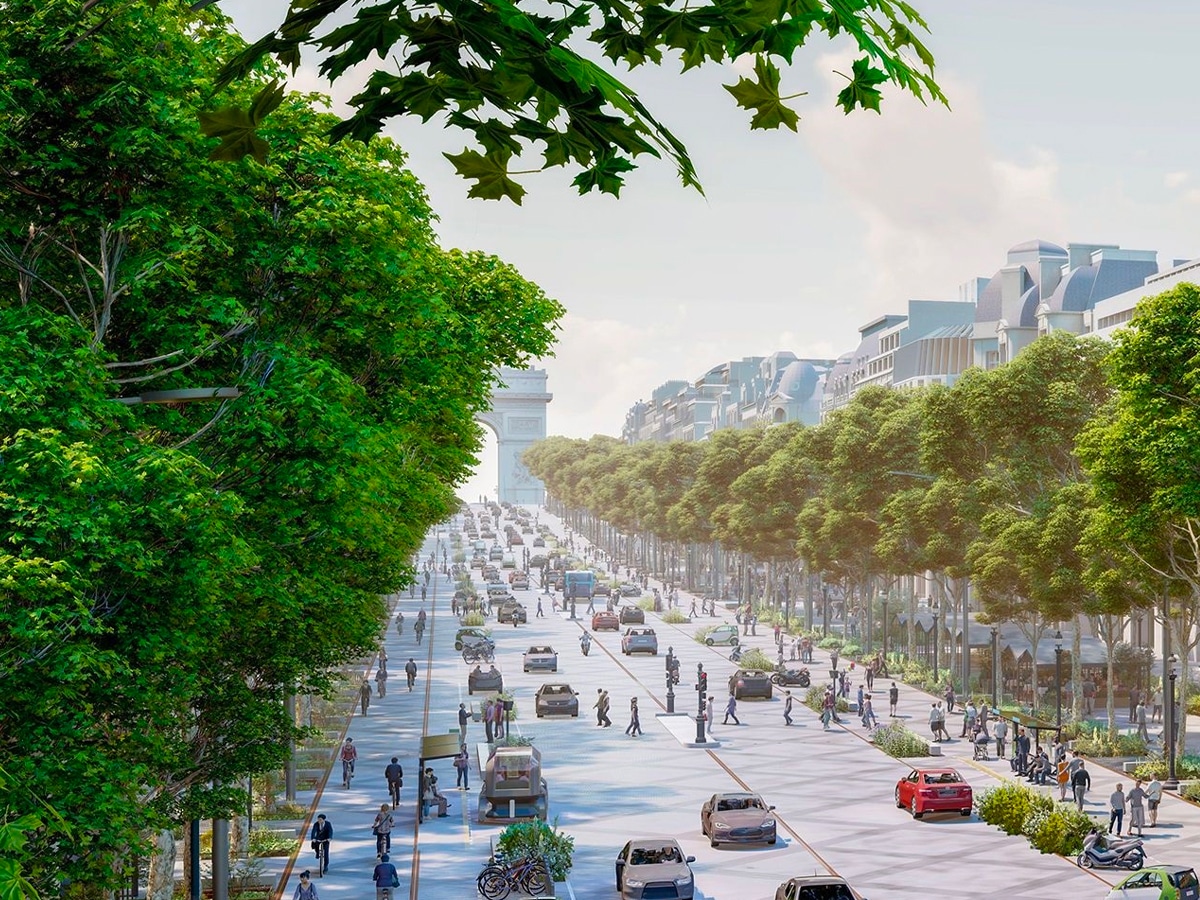
According to a new report from transportation and delivery platform Uber, in conjunction with engineering professional services firm WSP Global, the brave new world will look eerily familiar. In its Future of Delivery: Unleashing the Potential of Micromobility for the Last Mile report, Uber has outlined a bold new city blueprint, one fixated on sustainability, safety and convenience. Forget eVOTL and autonomous delivery robots (for now), the city of the future will be clean, green and delivered on two wheels.
The Future of Delivery
Set to the backdrop of a sustained shift towards convenience, which swelled during the covid-19 pandemic, the report urges cities, policymakers and businesses to “work in unison” to create more efficient delivery options. Remarkably, that means fewer cars and trucks in city centres and a greater push towards Micromobility: which WSP defines as people or electric powered, low to moderate speed, light weight vehicles such as bikes, cargo bikes, trolleys and drones. It might not be the all-encompassing space-age future we had initially envisioned, but as Regional General Manager Retail ANZ, Uber Eats Lucas Groeneveld explains, the human-to-human connection could have wide-reaching impacts.
“We’ve been talking about flying eVTOLs and drones for a long time and they will come, there’s no doubt that innovation will occur in the air and maybe underground and who knows? But I think the very real, tangible innovation today is actually micromobility,” he tells us. “What might happen over time, of course, is it might not be a person riding a cargo bike, it might be an autonomous mini-vehicle. So there’ll be innovation within that, but the premise of lightweight, no or low carbon emission, no noise pollution, no particle pollution solution that moves around our city to enable last mile delivery, that’s the thing that people are most aligned on and hopefully get excited about.”

Looking more broadly, the Future of Delivery report uncovered key findings from 10 global case studies, revealing how cities around the world, from Sydney to Paris, are using micromobility to reduce emissions and create more vibrant metros. Some elements are simple, such as Utrecht’s move to reduce speed limits to ensure rider safety, while others, like Montreal’s decision to upheave city infrastructure to facilitate greater cycling participation, are a little more challenging, but the premise is simple.
Cut the number of cars and trucks delivering packages, reduce emissions, speed up delivery times and get more people out and about in the real world. Truly, Uber’s ambitious utopia is one that focuses on people and place, highlighted by green spaces and open communities. And while it lands just short of the 1950s mailman hand-delivering your mail with a cheery smile, it’s far from a step back in time.
Technological innovation still plays a major role, just not in the manner you’d expect. Groeneveld explains that the major emphasis has been on safety, accessibility and adaptation. To aid new riders and delivery partners, Uber has implemented education practices, including forming partnerships with leading providers for online learning modules. There have also been first-to-market safety feature updates embedded into the technology, such as bike lane alerts, cycle-specific mapping and pre-trip checklists. It forms the foundation for the next stage of aggressive expansion into the Micromobility sector, provided the infrastructure is ready to catch up.
“The first element is definitely around safety, and that means different things, depending on what we’re talking about in the landscape of micromobility. But if you do come back to the basics of bicycles, there’s a lot that tech can do there,” Groeneveld says. “Certainly, there’s no substitute for infrastructure, but once you get those things right, there’s a lot that the technology can do to improve things – the bicycle helmet selfies for example. The dynamic checklists that we have for the prompt of the partners. We have bicycle-specific navigation that routes bikes in a safer way, and again, you need the infrastructure as well to get that routing right.”
Reducing cars and trucks in the city centre, while simultaneously asking government departments to reduce speed limits is a courageous strategy, but as Groeneveld explains, Australia need only look to its more equipped neighbours for inspiration.
“There is a lot Australians can learn from the research and data from the ten cities examined in the Future of Delivery Report,” he says. “Firstly, ensuring we all work together to make it safer for people to cycle in cities, by changing the built environment to facilitate safe and easy pick-up and drop-off from the kerb. And secondly, setting long-term policies that support a transition from cars, trucks and vans to micromobility for last-mile deliveries, promoting a more sustainable option.”
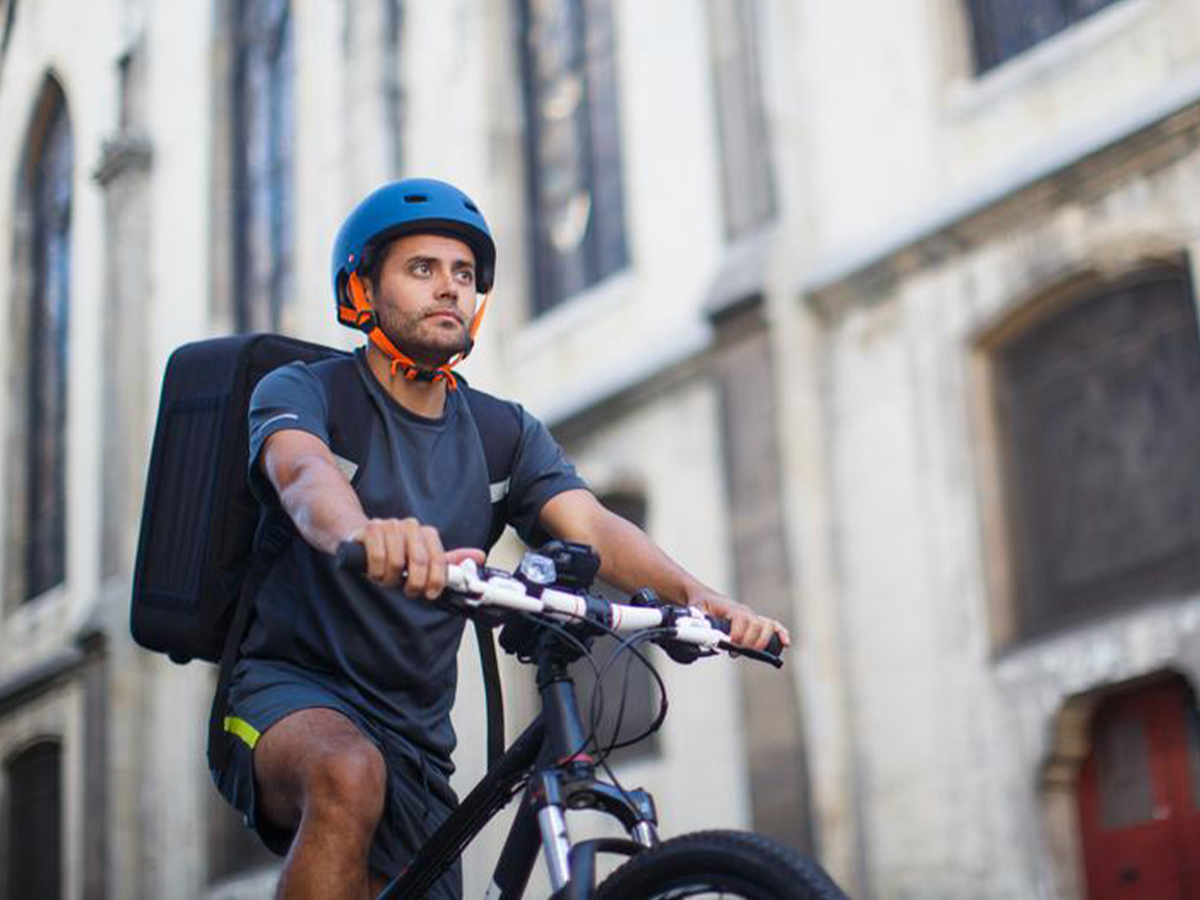
Safety as a Commodity
In Paris, a city where 57 per cent of deliveries are made through micromobility, congestion plays a pivotal role in last-mile delivery, both from a logistical and sustainable point of view. According to Uber’s report, delivery vehicles represented 15-20 per cent of traffic in Paris, but accounted for 45 per cent of harmful particulates. In response, the Council of Paris is committed to a shift towards cycling in CBD areas, in an effort to improve health and safety outcomes and follow through on the city’s carbon reduction targets.
The first step, saw vehicle travel speed limited to 30km/hr across the city except on main roads. The decision not only improved safety but made it easier and safer for people to pick-up and drop-off orders. From there, The Council of Paris also committed to establishing 650 km of cycleways by removing 72 per cent of on-street car parking spots by 2024.

Sustainability in the Sights
It’s no secret that businesses love to plug their green credentials, sometimes without merit, but over the past few years, cities have got in on the action. Back in 2012, Copenhagen announced a plan to become the world’s first carbon-neutral capital city by 2025, and since then, the race towards net-zero has been well and truly underway.
As the report outlines, an increase in Micromobility delivery could open the door for greater health and environmental conditions. Cargo bikes emit 90 per cent fewer carbon emissions compared to diesel vans, which contribute to low air quality and pollution. Further to that, Uber and WSP suggest that using e-bikes, motor scooters and bicycles could curb a number of health aspects associated with long-term exposure to noise, including stress, mental health concerns and high blood pressure.
“If you’re going to get on a bike or walk to a bus or train, that’s good for your incidental exercise, but then also, if you’re not breathing in as many pollutants, then there’s a real health impact towards that,” report co-author WSP’s Graham Pointer says. “That’s something that Europe and London address with low emission zones, and those health benefits are what drives a lot of that. We haven’t really had that change in Australia and our cities. It hasn’t really gone up the list of things we worry about. I think that’ll be to our detriment.”
In Sydney, a highly-congested urban area, a micro-logistics hub trail has been underway since 2016. “It found that delivery by bike took half the time of a van, travelled shorter distances, used less space and was less affected by loading zone availability and traffic conditions,” the report reads. “The trial resulted in a 54 per cent reduction in daily vehicle trip emissions, loading zone use dropped by 9.3 hours and the time spent driving in the CBD dropped 9.7 hours.”
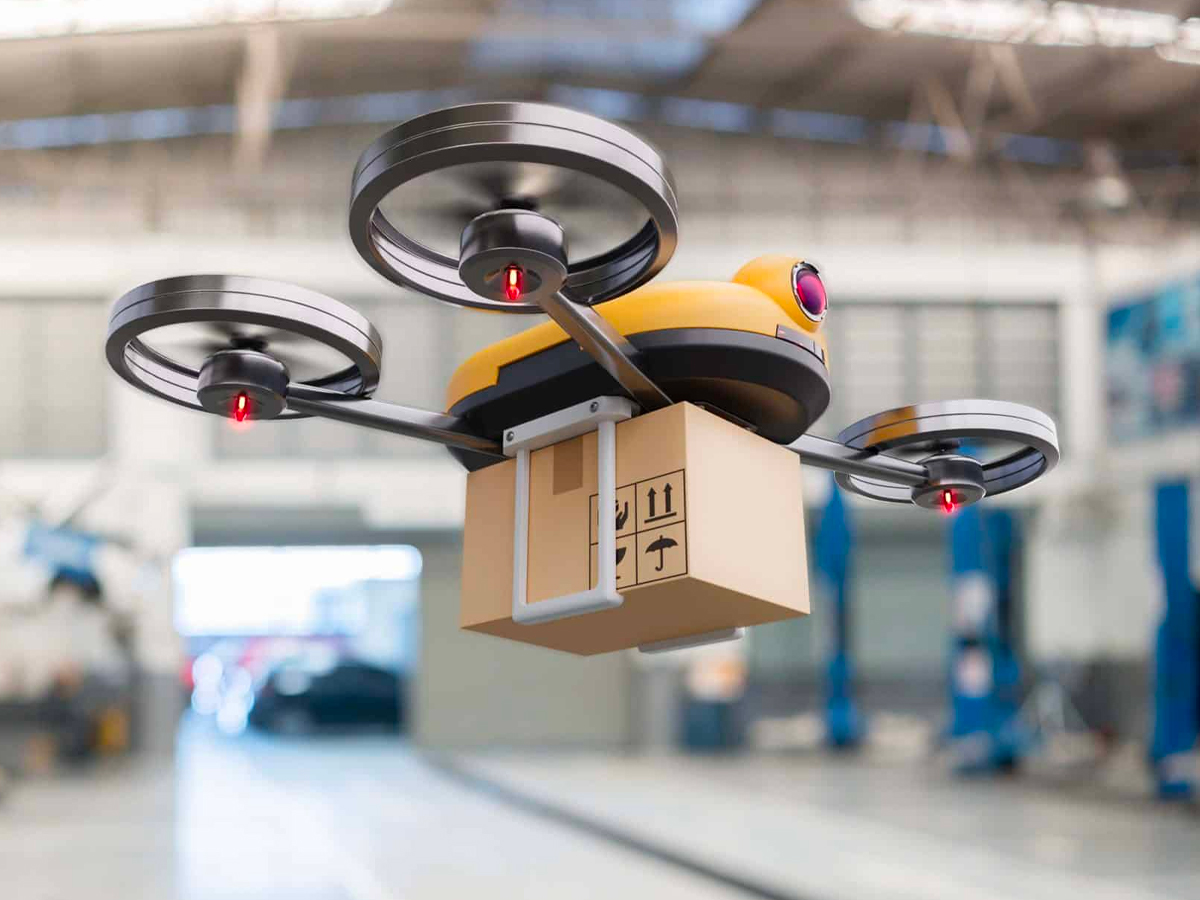
Beyond Tomorrow
With city development and sustainability high on the global priority list for 2022, it’s unsurprising that low-emission, low impact delivery is on the table. As Groeneveld explains, the convenience economy is surging, worth “more than $650 billion globally last year”, a rate expected to continue. As such, the Regional General Manager Retail ANZ, Uber Eats suggests that infrastructure updates and the move towards greener pastures isn’t something cities can start preparing for, they must be prepared to act now.
“By the end of the decade there will be a third more vehicles on the road – adding eleven minutes to the daily commute,” Groeneveld says. “But infrastructure is not a tomorrow problem – it’s a right now opportunity and micromobility is the most logical solution.”
But the most logical solution is not always the most popular. It’s hard not to get excited by autonomous delivery robots and eVOTL additions, despite their apparent flaws and enhanced regulatory requirements. There’s something in our nature to opt for the shiny, new and interesting, and thankfully, Pointer didn’t rule out a future for high-tech delivery options, altogether. While drone delivery beers might be the future that we’ve all been waiting for, the real benefit lies outside the city walls.
.
“People want their delivery, their parcel, their food delivery to get there quickly. They want it fresh and at the moment for the next little period that’s best achieved through a person running or getting on a bike,” Pointer tells us. “There are different types of freight tasks that could move towards that super sexy drone feature sooner than others. Right now, in suburbs in Australia, you’re able to get an aerial drone to deliver a coffee or a burrito and have a really good use case around getting prescriptions and medicines out to far-flung properties in the Outback. The key challenge for that super sexy robot future is those particular use cases where it makes the most sense in terms of getting what we want to us quickly and reliably.”
“Everybody talks aerial drones, but the thing that’s gone under the radar is that there’s probably a quicker future, particularly in more dense urban areas, with the pavement drone,” Pointer says. “There are a few on campuses in the States and in the north of London as well, where they’re testing these things. In terms of the use case of a denser environment, it feels like they’re the next to cab off the rank compared to dealing with the aerial drones in the middle of cities.”
Uber and WSP Global’s Future of Delivery Report outlines a series of recommendations designed to bolster Micromobility across the globe. With a goal of improving delivery times, decarbonising the last mile and turning our city centres into thriving first-world hubs, the plan is bold and government approval may be challenging, but as Groeneveld explains, infrastructure is “not a tomorrow problem, it’s a today problem”.
DISCLAIMER: The author of this article, Nick Hall, was invited to attend the Paris press briefing as a guest of Uber.
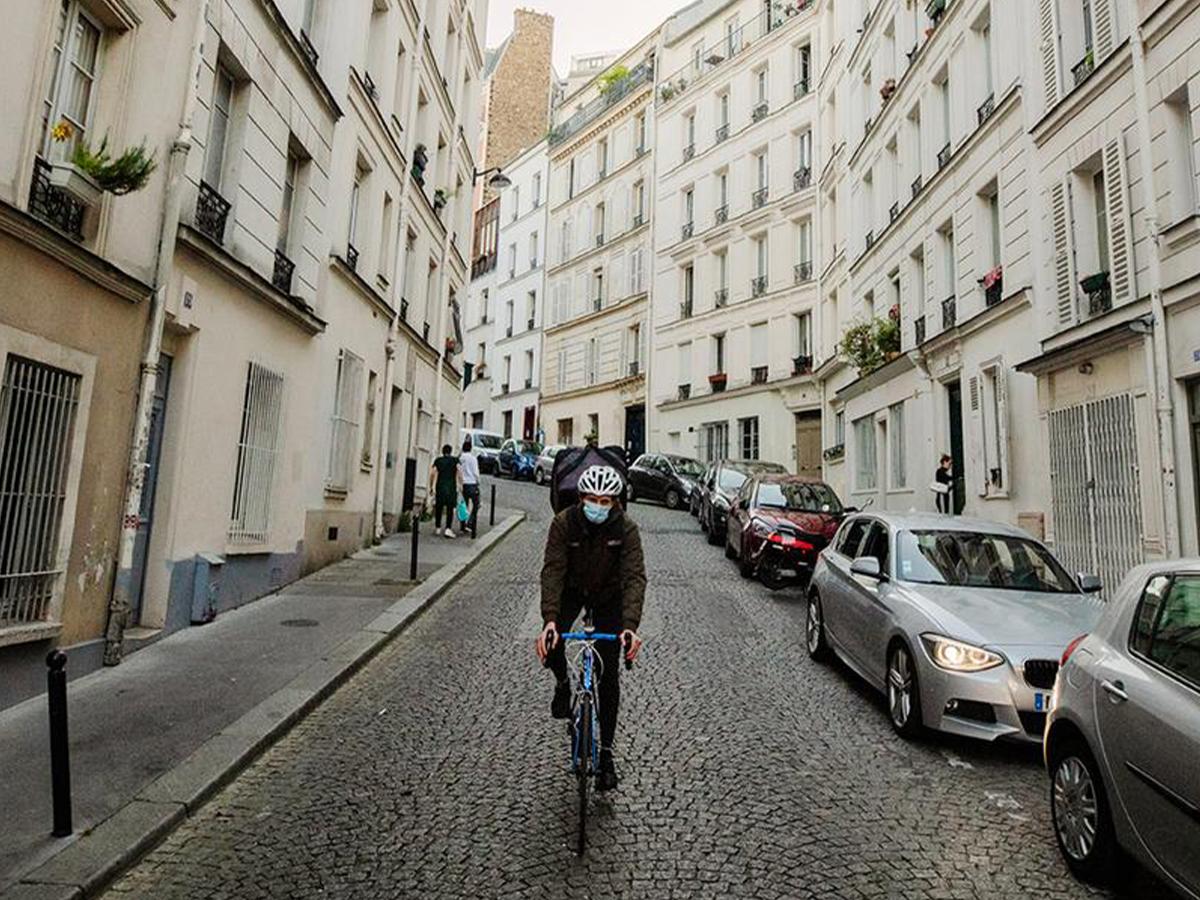
















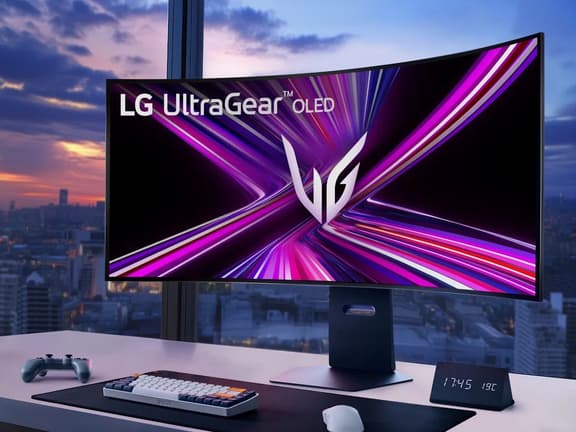



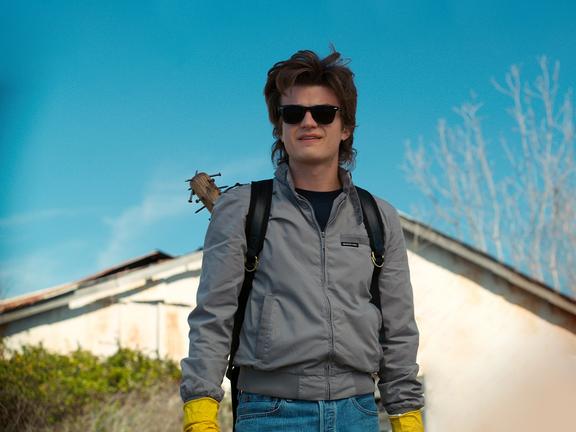





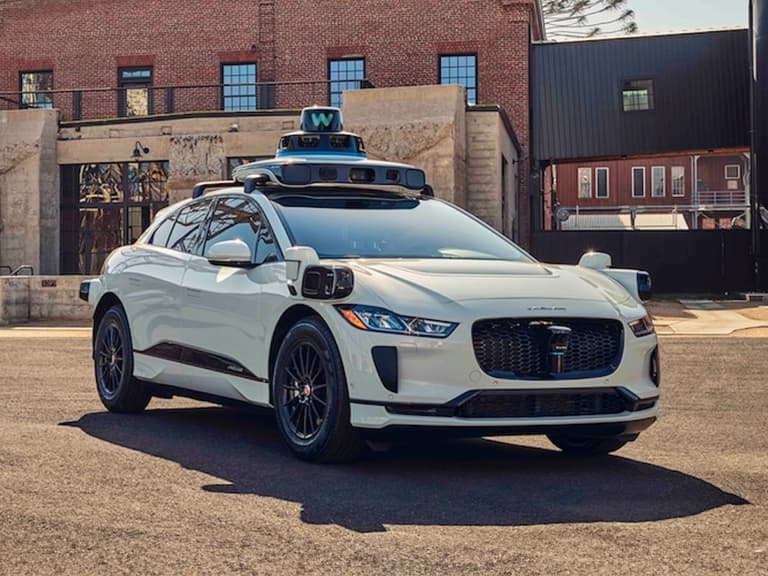



Comments
We love hearing from you. or to leave a comment.